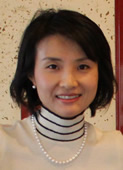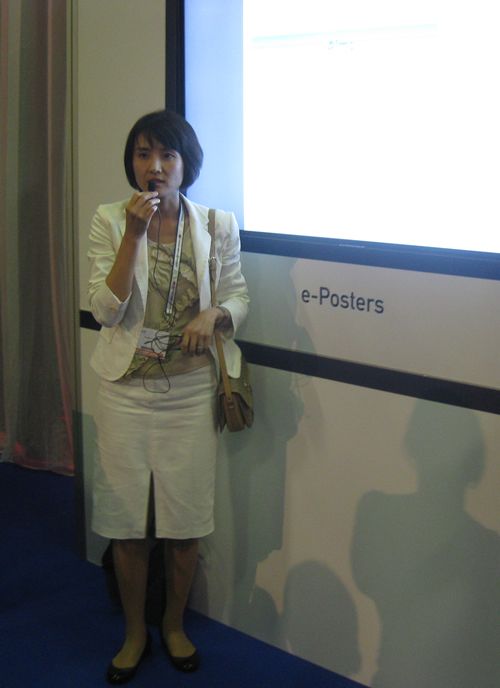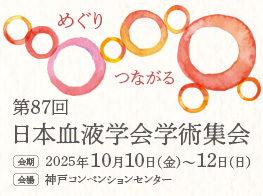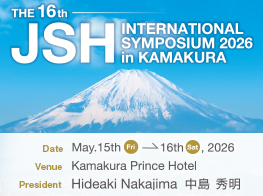
名前:藤田(西山)由利子 【東京大学医科学研究所 先端医療研究センター分子療法分野】
発表日時:2014年6月14日
発表形式:e-poster
Title:
Generation of multivirus-specific T cells by a single stimulation of PBMCs with a peptide mixture utilizing serum free medium
Authors:
〇Yuriko Fujita* 1, Toshiaki Ono2, Nakaba Ochiai3, Ai Kawana-Tachikawa4, Ann M. Leen5, Helen E. Heslop5, Tomohiro Morio2, 3, Satoshi Takahashi1
Affiliations:
1.Division of Molecular Therapy, Advanced Clinical Research Center, The Institute of Medical Science, The University of Tokyo, 2.Department of Pediatrics and Developmental Biology, Tokyo Medical and Dental University, Graduate School of Medical and Dental Sciences, 3.Center for Cell Therapy, Tokyo Medical and Dental University, Tokyo, Japan, 4.Division of Infectious Disease, Advanced Clinical Research Center, The Institute of Medical Science, The University of Tokyo, 5.Center for Cell and Gene Therapy, Baylor College of Medicine, Houston Methodist Hospital and Texas Children's Hospital, Houston, TX, United States
Abstract:
Extension to donors other than HLA-matched siblings following advanced immunosuppressive treatment has resulted in the emergence of viral infections as major contributors to morbidity and mortality after hematopoietic stem cell transplantation (HSCT). While pharmacological agents are standard therapy for some, they have substantial toxicities, generate resistant variants, and frequently ineffective. Moreover, immune reconstitution is necessary for long-term protection especially after HSCT.
Restoration of virus-specific immunity offers an attractive alternative to conventional drugs. Adoptive transfer of virus-specific CTLs from stem cell donors has been proved to be safe and effective to treat viral infection. Recently, the system of rapid generation of multivirus-specific T cells has been reported (Gerdemann, U, 2012). With this system, polyclonal CTLs specific for multivirus antigens can be produced after single stimulation of PBMCs with a peptide mixture spanning the target antigens in the presence of IL4 and IL7. We have introduced and verified this system to apply for clinical use in Japan. In terms of regulation by Japanese FDA, we have generated mutivirus-specific T cells using this method in serum-free medium, which have resulted in production of mutivirus-specific T cells with cell number of average 212.2×10^6 cells after 9-12 days of culture in RPMI+5%human serum(HS) versus average of 123.3×10^6 cells in serum-free medium(n=4), phenotype of average of CD3+ 97.7%, CD4+ 84.8%, CD8+ 11.7%, CD3+CD62L+CD45RO+ 89.0% in RPMI+5%HS versus average of CD3+98.9%, CD4+ 74.4%, CD8+ 14.8%, CD3+CD62L+CD45RO+ 93.2% in serum-free medium and viral antigens-specificity of average of 13.1% IFNγ production in RPMI+5%HS after antigen stimulation of EBV, adenovirus and cytomegalovirus antigens measured by intracellular cytokine staining (ICS) versus average of 18.7% in serum-free medium.
To meet the requirement for the viral infections after HSCT by broad viral antigens, target antigens have been extended from 3 (cytomegalovirus, EBV, adenovirus), 5 (addition of HHV-6 and BKV to 3) and 7 (addition of JC virus and VZV to 5) viruses. 20×10^6 of PBMCs were stimulated with peptide mixture spanning the target antigens of 7 viruses and cultured in serum-free medium with cocktail of IL4 and IL7 for 9-12 days to obtain 151.9×±39.6 ×10^6 cells(n=5). These cells were mostly CD3+ (average 95.6%), which contained both CD4+ (average 74.1%) and CD8+ (average 20.8%) cells and they expressed central memory markers(average 80% of CD3+CD62L+CD45RO+ cells). These single stimulated and cultured cells showed specificity toward the all 7 virus antigens measured by IFNγ production (average of total positive cells: 21.2% CD4+IFNγ+ cells and 5.1% CD8+IFNγ+ cells measured by ICS; n= 4) .
This approach can be readily introduced to clinical practice and is expected to be introduced to Japan as an alternative treatment/prevention for viral infection after HSCT to conventional therapy. We also seek a way to eventually establish a system to prepare multivirus-specific T cells by this rapid, easy and cost-effective method for third party use.
学会印象記
この度は、19th Congress of European Hematology Association(EHA)で発表するにあたり日本血液学会EHA Travel Awardに採択していただき、誠にありがとうございました。
学会は6月12日から15日までイタリア・ミラノで開かれました。会場はMico Milano Congressiで、ミラノの歴史的な建造物の中でひときわ目立つ近代的な建物でした。会場に入ると、参加者達が足早に次々とチェックインしており、大規模な学会らしく活気に満ち溢れていました。様々なアクセントの英語が飛び交うのを耳にして、ヨーロッパ各地だけでなくオーストラリアやアメリカ、アジア等からの参加者がいることがわかりました。それぞれの分野で臨床、基礎研究を行っている方々と広く意見を交換しこの特別な機会を楽しもう、というとても良い雰囲気が感じられました。
今回初めての試みとして、従来の形式のポスターに加えて、e-posterという形式が加えられました。これは、あらかじめ発表者はポスターのデータを電子媒体でアップロードしておき、学会場では電子モニターのタッチスクリーンで興味のあるポスターを選び、ポスターの箇所を自由に選択して閲覧できるというものです。e-posterの発表者はセッションの時間にスクリーン前に集まり、同じ分野の発表者やそれに関わる研究者の前で研究内容を発表し自由に意見交換ができる、という画期的なシステムです。
私はこのe-posterに選出していただき短いながらも発表の機会を得ることができました。私の研究テーマは造血幹細胞移植後のウイルス感染症に対するウイルス特異的T細胞療法の開発です。造血幹細胞移植後のウイルス感染症に対する現在の標準的治療法は化学療法ですが、それに代わる治療法としてウイルス特異的T細胞を用いた細胞性免疫療法は化学療法不応例にも有効かつ持続性があると報告されています。さらに米国での臨床試験ではHLA近似ドナー由来のウイルス特異的T細胞療法の有効性が確認されています。私達はわが国でのウイルス特異的T細胞療法の臨床試験の実現と、第三者ドナーからのウイルス特異的T細胞のバンク化を目指しており、実現化により移植後ウイルス感染症の予後が大きく改善すると期待されます。
私達は米国ベイラー医科大学との共同研究で、同施設開発のウイルス特異的T細胞迅速作製法(Mol Ther. 20(8): 1622-32. 2012)を導入し検証を行いました。本方法は、免疫低下状態で罹患率・死亡率が高い複数のウイルスの免疫原性のある合成ペプチドで末梢血単核細胞を刺激し、ウイルス特異的T細胞を作製するというものです。遺伝子導入やウィルスベクターが不要でありさらに10-12日という短期間で作製が可能です。特に日本での臨床応用の際の規制対応のために、無血清培養系で、複数ウイルス特異的T細胞の作製を試み、これを発表しました。発表では同じ分野の研究者や医療従事者と意見を交わすことができ、とても貴重な経験になりました。
私は同じ研究分野である遺伝子細胞療法のセッションに参加しましたが、会場は聴講者で満席、その世界的な注目度の高さを感じました。臨床研究の成果発表がほとんどで細胞免疫療法の分野ではわが国はまだ発展途上であると感じましたが、研究が進んでいる各国の成果発表を目の当たりにすると非常に良い刺激になりました。
今回EHAにて臨床研究、基礎研究における国際的な知見を深められましたことは、とても貴重な財産になったと思います。国際委員会委員長の小澤敬也先生が交流会でおっしゃられていましたように、今回の受賞を励みに、さらなる医学研究、医療の発展のためにこれからも頑張りたいと思います。このような機会を与えてくださった日本血液学会、国際委員会の先生方、事務局の皆様に心より感謝いたします。また平素よりご指導いただいております東京大学医科学研究所の高橋聡先生、東京医科歯科大学の森尾友宏先生、東京大学医科学研究所の立川(川名)愛先生に心より感謝いたします。




